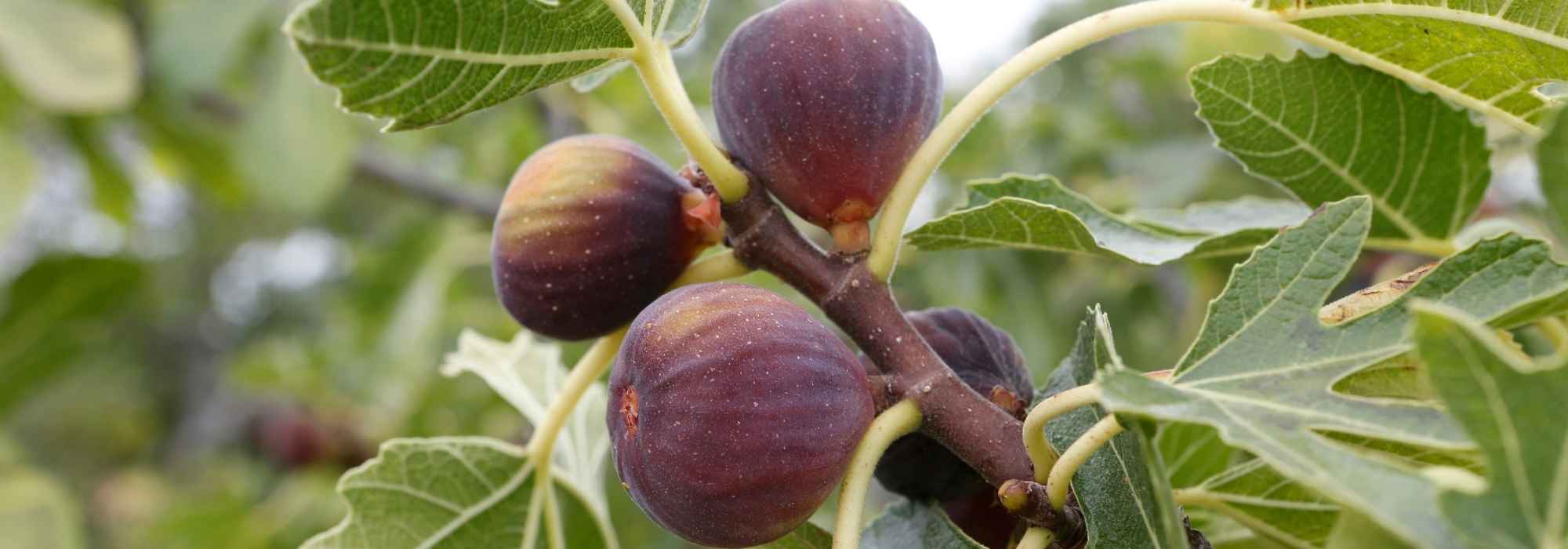
Biferous or unifera fig tree: what are the differences?
To make the right choice
Contents
Edible fig trees or common figs have been cultivated for millennia for their figs (and, incidentally, the beauty of the bush itself). However, the terms unifera and biferous are often heard when it comes to choosing a fruit variety to plant in your garden. What do these two terms mean? What are the differences between biferous and unifera figs? Is it really useful to know? We explain everything in this advice sheet.
A bit of botany
The Common Fig or Edible Fig is known as Ficus carica in Latin. The fig tree belongs to the Moraceae family, like all other Ficus (the tropical plants found in our homes) and Morus, the mulberries. There are nearly 800 species of Ficus, but only Ficus carica grows naturally in Europe. This fruit tree has been cultivated for its figs for millennia in the Mediterranean. The fig is actually a pseudocarp: the sycone, the fig tree’s unique inflorescence, transforms into a collection of achenes within an edible pulp. The Common and cultivated Fig comes in nearly a thousand cultivars.
In nature, it is the so-called “female” figs that produce edible fruits, known as the Common Fig or Domestic Fig. The so-called “male” figs or caprifigs produce inedible fruits. The fig tree’s reproduction cycle is… complicated. Indeed, wild figs reproduce through symbiosis with an insect, the blastophage (Blastophaga psenes in Europe). The reproduction cycle is too complex to explain in a few sentences, so here is a link to a document that will detail it for you: Symbiosis between Ficus carica and Blastophaga psenes.
Fortunately for us, the cultivated varieties are therefore “female” figs but especially parthenocarpic, meaning they can produce fruits without fertilisation of an ovule. Thus, without the help of the blastophage, which only lives in the south of France. It is often said that these parthenocarpic figs are self-fertile, as they bear fruit without the assistance of a second fig tree nearby.
→ Learn all about fig pollination at: Blastophage of the fig: the tiny insect essential for figs.
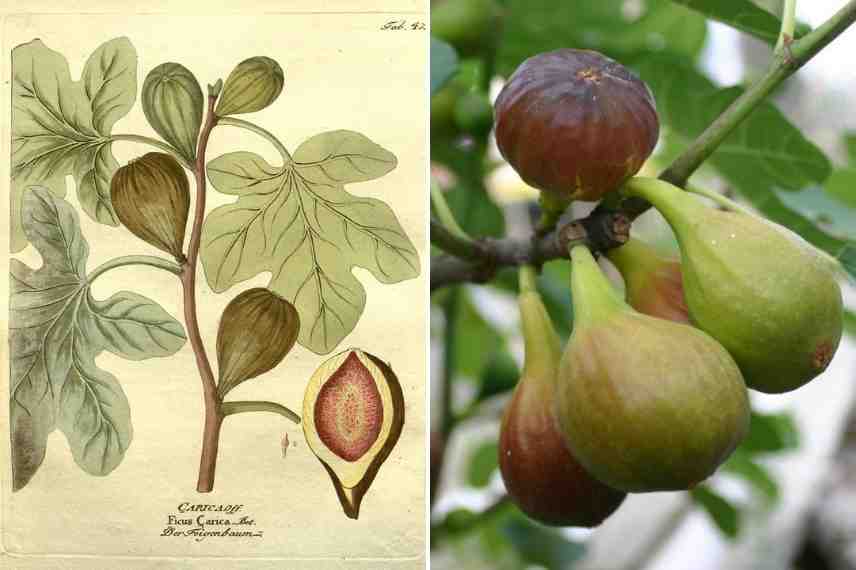
Fig, botanical plate from 1822, and ‘Goutte d’Or’ fig (biferous)
Biferous or uniforous: what are the differences?
The uniferous fig tree
The uniferous fig tree produces only once a year, at the end of summer (August-September). The figs are found on the branches in the axils of the leaves. Only those located at the bottom of the branches reach ripeness, while those at the tips of the branches do not have the opportunity to ripen before the first cold weather.
The biferous fig tree
Biferous fig trees yield two harvests of figs per year. They produce for the first time between June and July and then again in autumn (from late August to October depending on the variety and climate). The first figs are those that appeared late in the season at the tips of the branches and managed to survive the winter. As soon as the first sunny days arrive, these figs, known as “flower figs,” begin to develop again and then ripen. The “autumn figs,” on the other hand, are the figs that appeared on the wood of the year.
Please note: in some cases, one may encounter trifera fig trees or cimaruoli. These fig trees provide figs three times a year: in June, in autumn, and a little in spring. In reality, the figs produced in spring are fruits that appeared at the tips of certain branches and continue to develop in summer to ripen only the following spring. This can only occur in warm climates such as in Spain or southern Italy.
Discover other Fig trees
View all →Available in 0 sizes
Available in 3 sizes
Available in 1 sizes
Available in 3 sizes
Available in 3 sizes
Available in 4 sizes
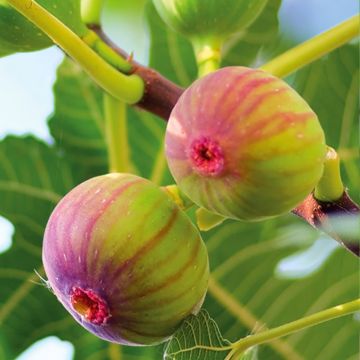
Available in 1 sizes
Available in 3 sizes
Available in 2 sizes
Available in 2 sizes
Biferous or uniferous: which type of fig tree to choose?
It will primarily depend on your climate!
In the South, choose biferous fig trees
There are many more biferous varieties than uniferae, but they should be reserved for the warmest regions of the country. Biferous varieties are suited to areas where winters are not too harsh. Additionally, late frosts below -4 °C may destroy the first figs, the famous “flower figs”. Meanwhile, a too-cool autumn may prevent the “autumn figs” from ripening. The choice is vast among biferous fig trees, but you might opt for well-known varieties such as ‘Brown Turkey’, ‘Violette Dauphine’, ‘Goutte d’Or’, or even the small ‘Icecrystal’ fig tree with a compact growth, ideal for small gardens or pot cultivation. Of course, uniferae fig trees will also thrive in the South of France.
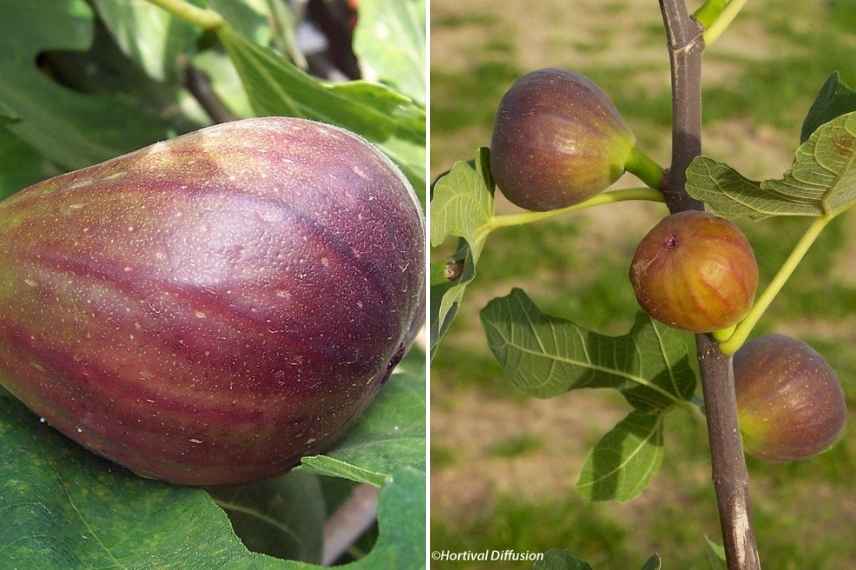 ‘Brown Turkey’ and ‘Violette Dauphine’ fig trees</caption]
‘Brown Turkey’ and ‘Violette Dauphine’ fig trees</caption]
In the North of the Loire, plant uniferae fig trees
You will have understood, for those in the North: too bad (or almost) for double fruiting! It will be necessary to favour uniferae varieties, such as the Nazareth fig tree which fruits towards the end of August or the dwarf ‘Figality’ fig tree. Other uniferae varieties are also interesting, such as the ‘Noire de Nice’ with very dark, almost black fruits or the variegated fig tree (or Bourjassote rayé) with its striking yellow fruits variegated with green.
However, in small gardens sheltered from cold winds and facing south, it is still possible to try some more cold-resistant biferous varieties: such as the compact ‘Précoce de Dalmatie’ or the ‘Madeleine des 2 saisons’ fig tree.
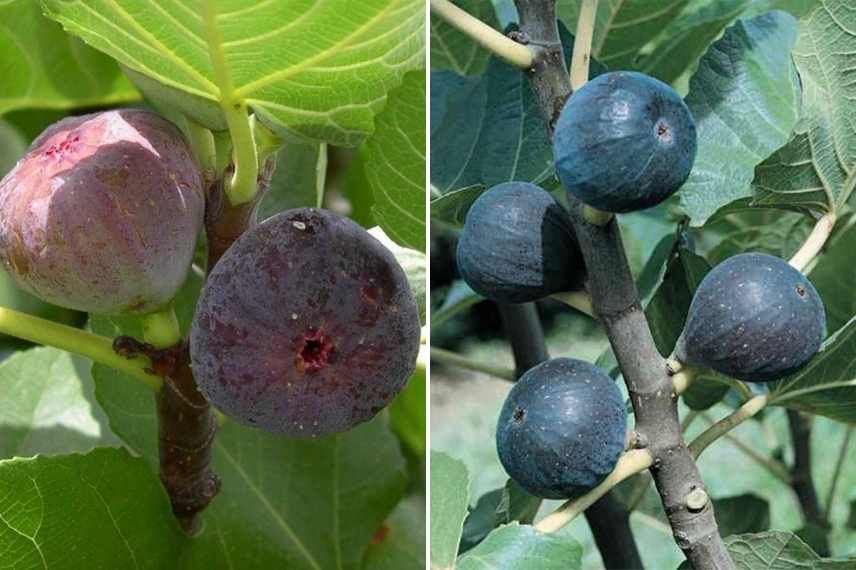 ‘Madeleine des deux saisons’ and ‘Noire de Nice’ fig trees</caption]
‘Madeleine des deux saisons’ and ‘Noire de Nice’ fig trees</caption]
Read also
How to take a fig cutting and succeed?To learn more about the fig tree
- Read our article: “Fig tree: the must-have varieties for the garden”
- Subscribe!
- Contents
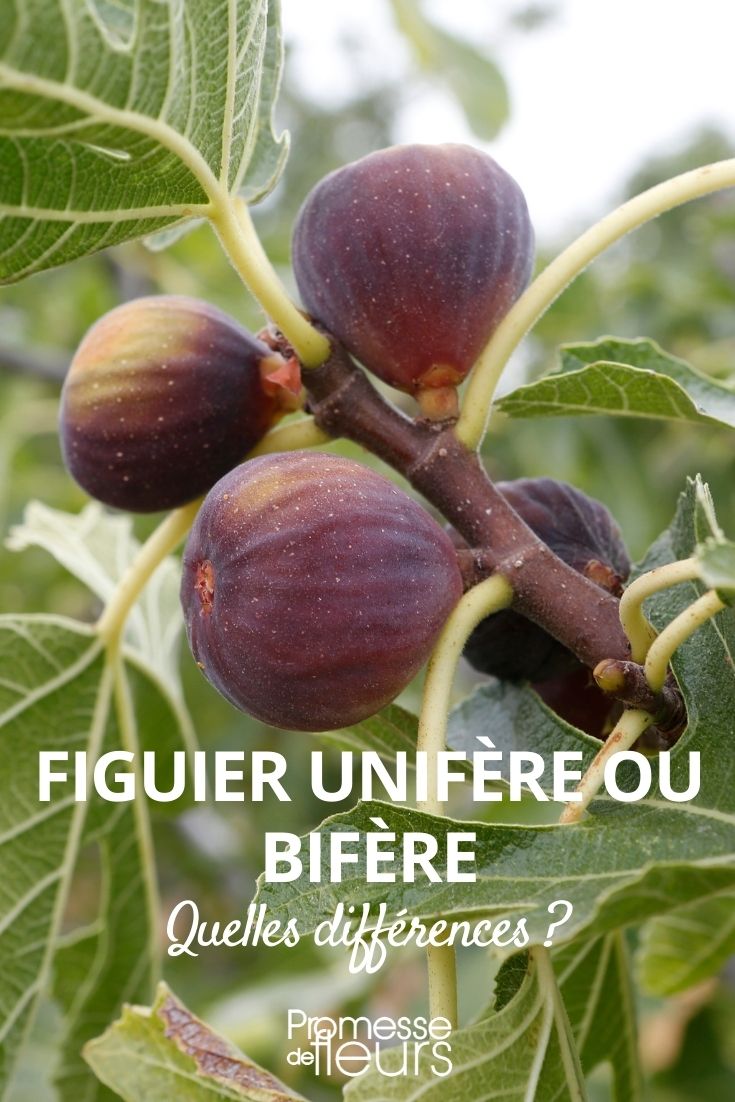































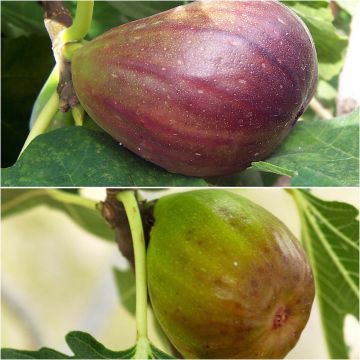
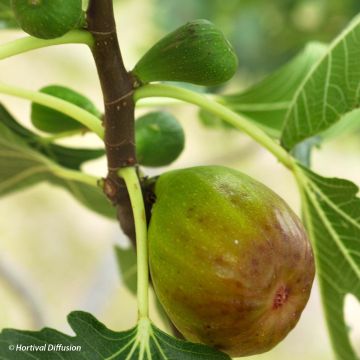
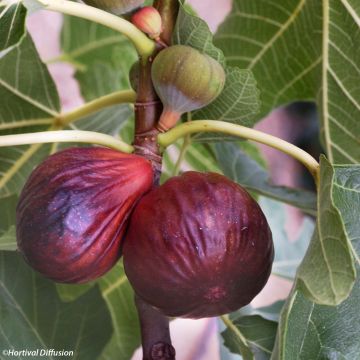
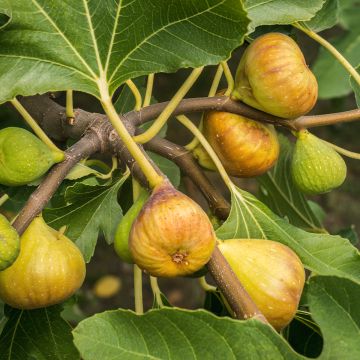
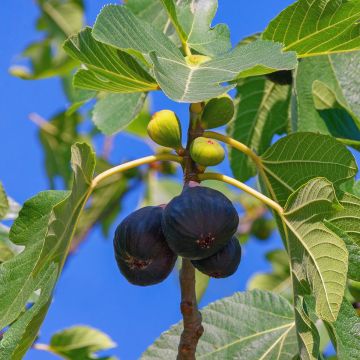
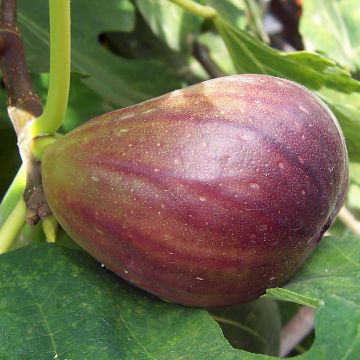
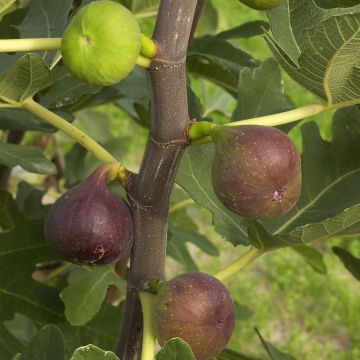
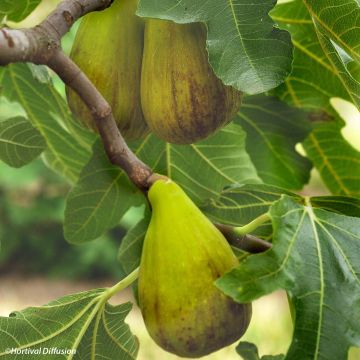
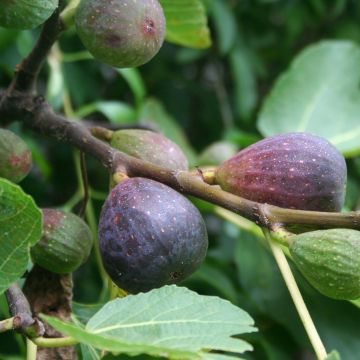
Comments